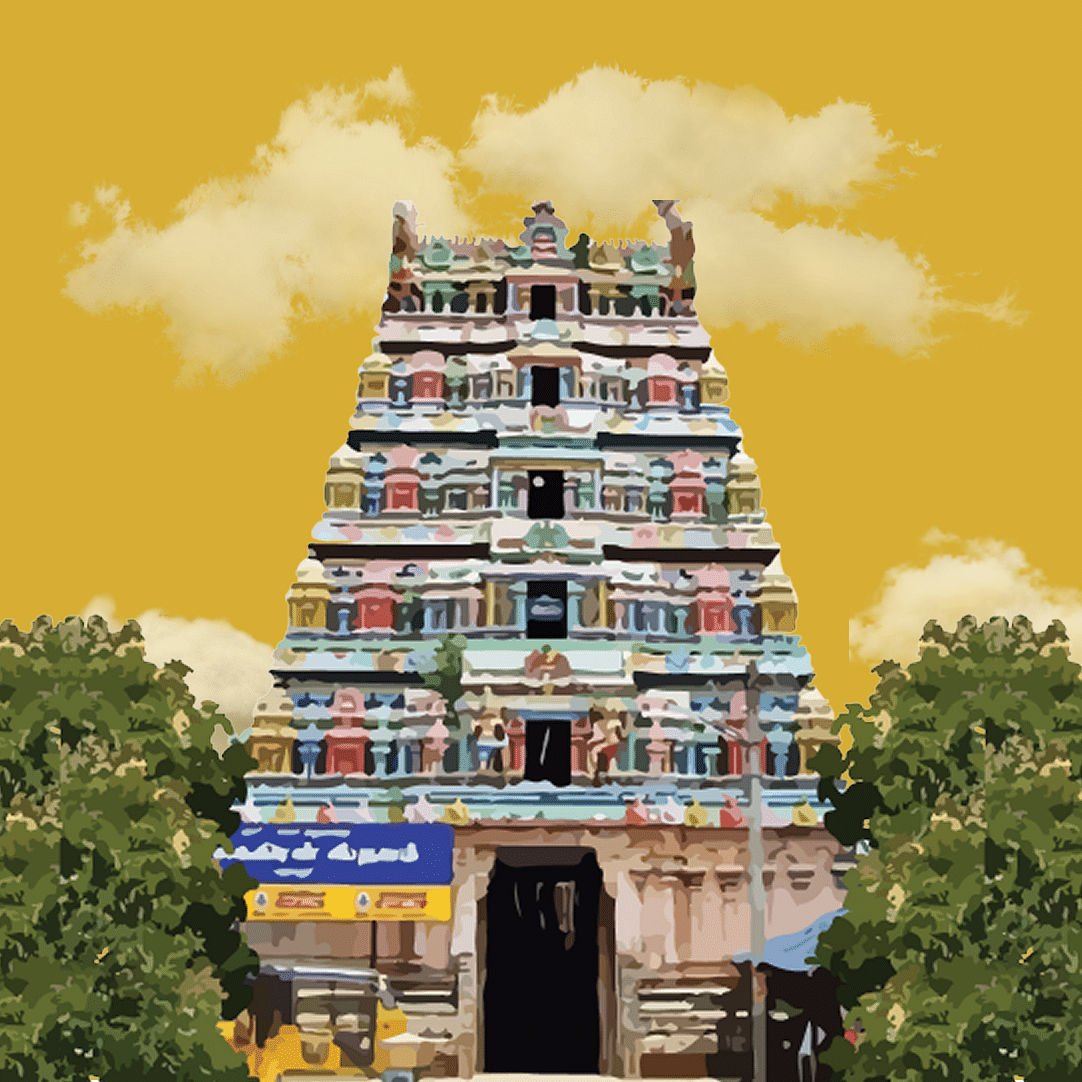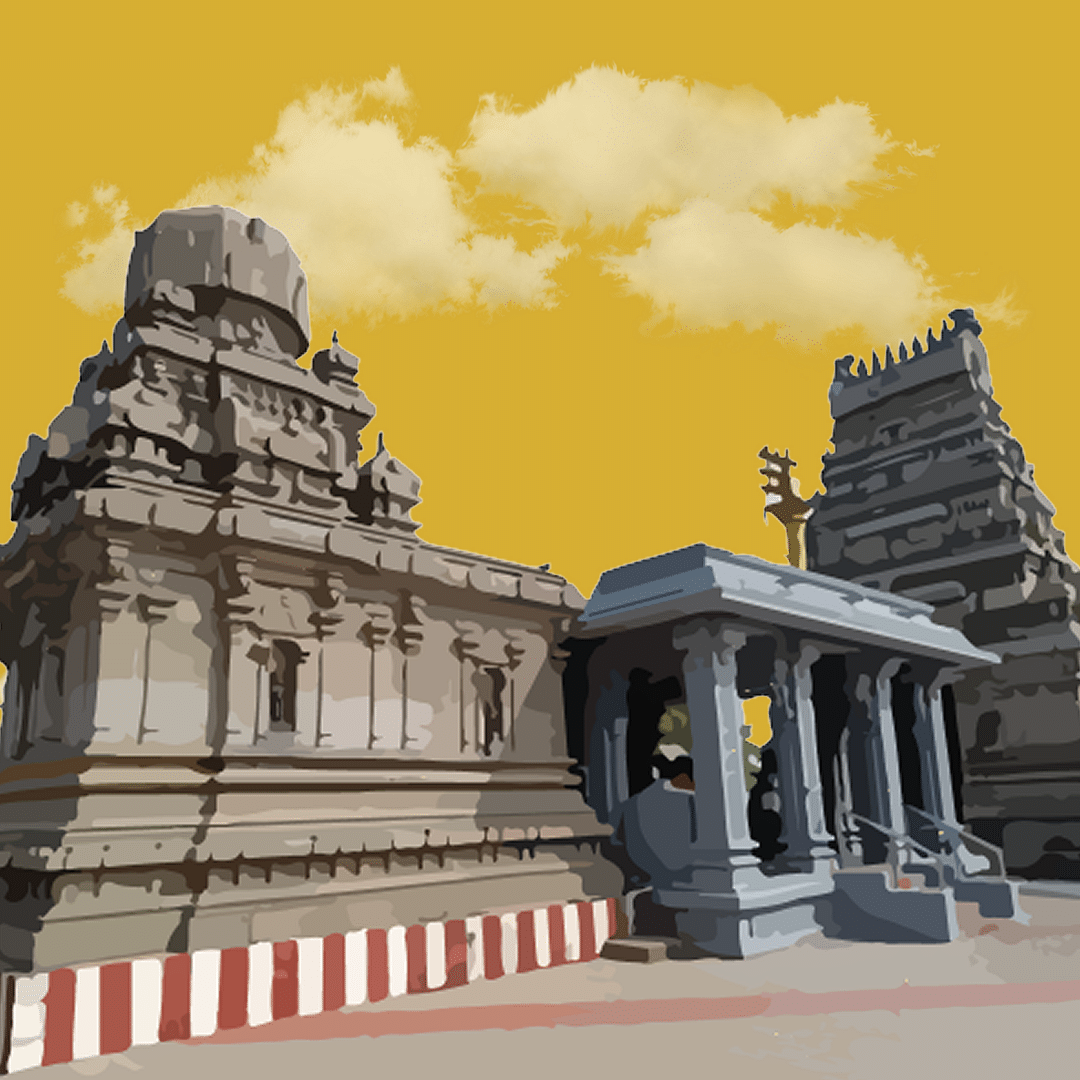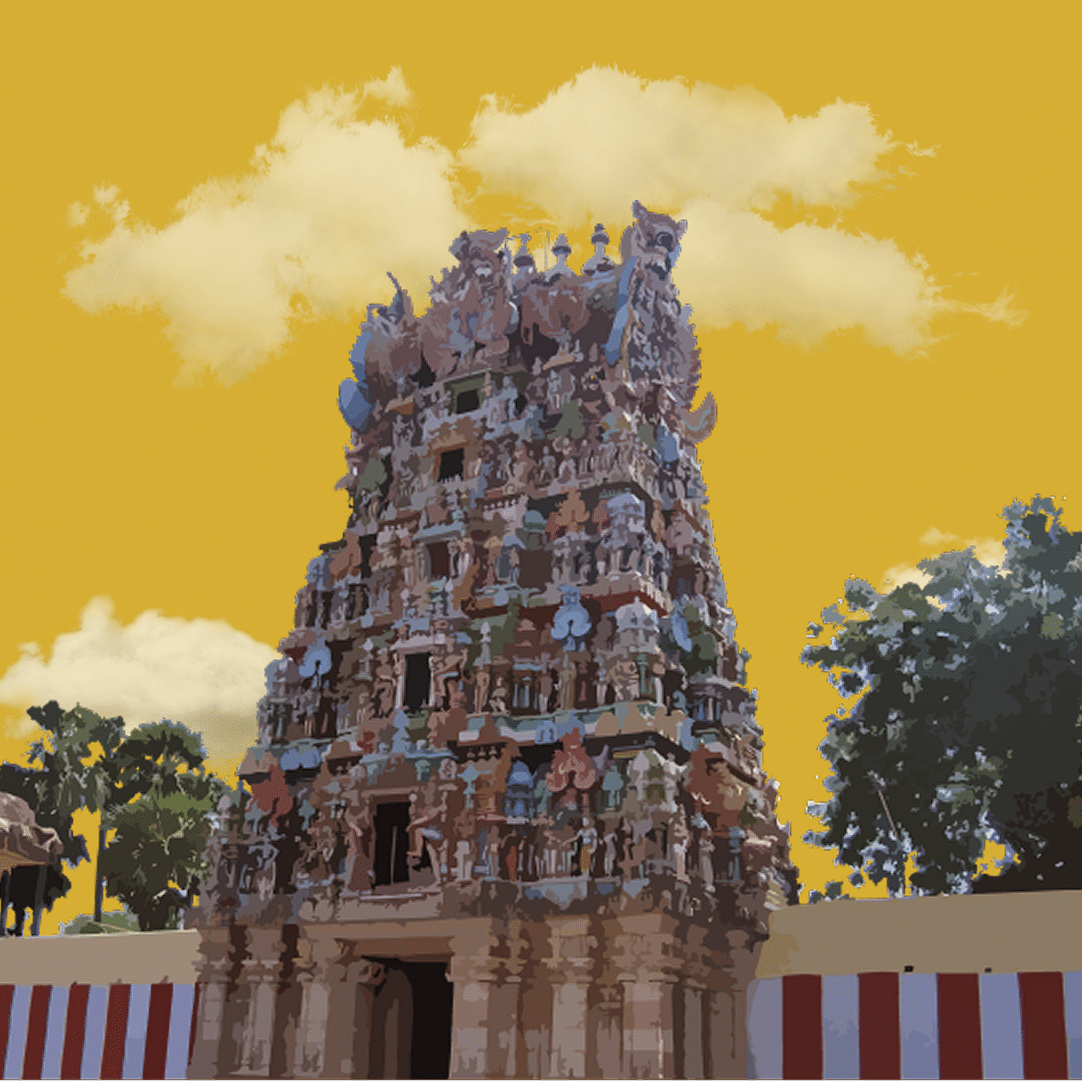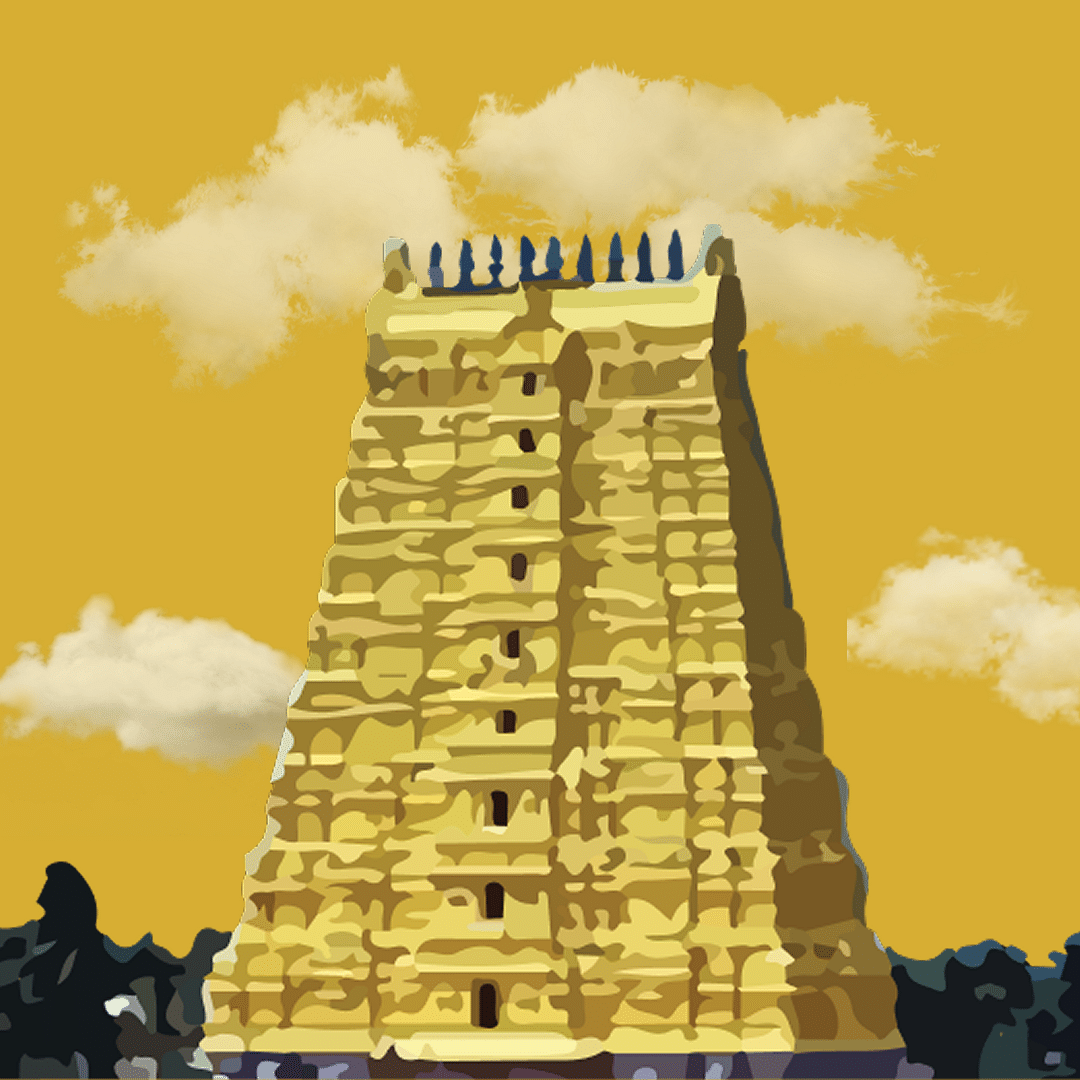Home > The GReaT Divine Darshan > Tirunelveli
HOLY PLACES
IN TIRUNELVELI
Tirunelveli isn’t just a place you visit—it’s a feeling that wraps around you like the temple prasadam leaf on a sunny afternoon. With every sunrise, the city hums to life as the temples in Tirunelveli open their doors, filling the air with chants, sandalwood, and that unmistakable buzz of devotion. From the majestic Arulmigu Nellaiyappar Temple to the lesser-known gems tucked away in quiet lanes, this is where the divine doesn’t just reside—it parades, blesses, and steals your heart. And just a stone’s throw from all that sacred splendour? That’s where we come in. At GRT Hotels in Tirunelveli, we’re not just offering a room—we’re offering you a soft landing after your spiritual adventures. Sore feet from temple-hopping? We’ve got cosy beds. Hungry after a long round of darshans? Our kitchen’s already on it. Think of us as your home base between the prayers and prasadam—a place where divine plans come with extra pillows, warm smiles, and a breakfast worth waking up for.
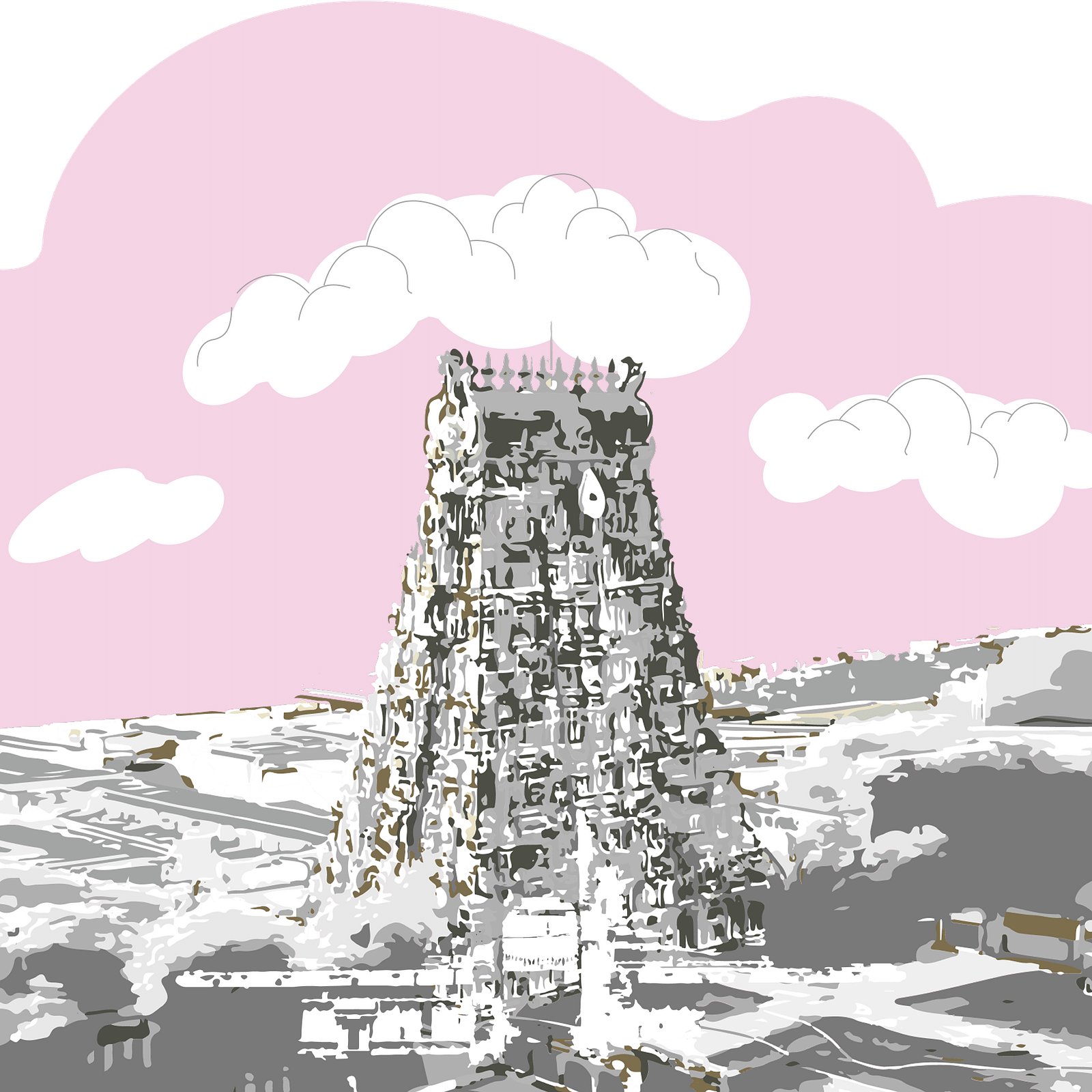
 OUR Hotels
OUR Hotels
IN THE CITY, BY THE SACRED SITES 🏙

Regency Tirunelveli by GRT Hotels
Welcome to Regency Tirunelveli by GRT Hotels—where sacred journeys meet soulful stays! Just a short stroll from Arulmigu Nellaiyappar Temple, we’re your cosy base for exploring the iconic temples in Tirunelveli. Think plush beds, hearty meals, and service with a divine touch. Tuck into local favourites at Naadody, our cycle-themed restaurant with flavours that ride from tradition to global. Then, raise a toast at Bulls and Bells, where retro beats and bold cocktails promise a night worth remembering. Come, stay blessed—and a little spoiled too!
 OURDivine Destinations
OURDivine Destinations
TRAVEL THROUGH THE MUSEUMS OF FAITH 🛕
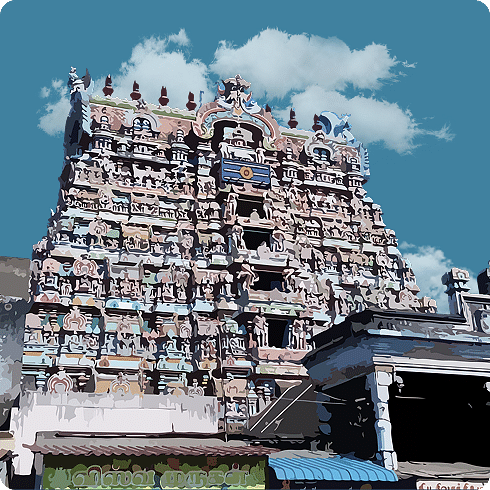
ARULMIGU NELLAIYAPPAR TEMPLE ✨
A masterpiece of Dravidian architecture, Nellaiappar Temple is one of the most revered temples in Tirunelveli, famed for its towering gopurams, musical pillars, and centuries-old inscriptions that echo the city’s rich Shaivite legacy.
Distance from Regency Tirunelveli4 km
Timing6:00 a.m. to 12:00 p.m.
4:00 p.m. to 9:00 p.m.FestivalPanguni Brahmotsavam: (Mar)
Arupathimoovar Festival: (Mar-Apr)
Vasantha Utsavam: (Mar-Apr)Sacred Food OfferedSakkarai Pongal
Transportation CostFor assistance, please contact the front desk.
Disclaimer: The temple's timings are subject to change as per the operating committee's decisions.
Arulmigu Nellaiyappar Temple:
- The temple is praised in Thevaram hymns by Thirugnana Sambandar, elevating its spiritual stature among Shaivite shrines.
- One of the earliest inscriptions in the temple dates back to the reign of Chola King Thalai Konda Veera Pandian (946–966 BC). It mentions a courtesan who offered ghee daily to light temple lamps and refers to the deity as Bhrammapuri Thevar.
- Several inscriptions from the Chola period are found on the temple pillars, including those from the reigns of Rajendra Chola I (1012–1044 BC) and Kulothunga Chola I (1070–1120 BC).
- The Pandya king Sadayavarman Kulothunga Pandya also made contributions, with inscriptions referring to Lord Shiva as Tirunelveli Udaya Nayanar.
- The temple houses over fifty inscriptions in multiple languages, including Tamil, Grantham, Kannada, and Telugu, showcasing its multicultural legacy and historic significance.
- Architecturally, Nellaiappar Temple is among the largest temples in Tamil Nadu, stretching 850 ft. long and 756 ft. wide, with five towering gopurams.
- The shrine of Goddess Gandhimathi Amman is considered more aesthetically pleasing than even that of Nellaiappar, drawing countless devotees and admirers.
- The Golden Lotus Tank is a central feature of the temple, believed to symbolise Lord Shiva as water and Lord Brahma as the lotus.
- The roof carvings include the 12 zodiac chakras, figures of Rathi and Manmathan, and the cosmic dance of Lord Shiva in the Lotus Hall (Lotus Shaba).
- The shrine of Lord Arumuganainar, located above Lord Shiva’s sannathi, is carved from a single stone, allowing devotees to see all six faces of the deity.
- Pasuvanthanai Pichandi Annai constructed a musical chakra within the temple—a divine feature appreciated by musicians.
- In the sanctum of the 63 Nayanmars, devotees are enchanted by the sculpture of Ravana lifting Mount Kailash and the depiction of music played on a harp.
- A powerful and touching sculpture on the northern wall’s western side shows the frightened Ambikai embracing Lord Shiva, moved by Ravana’s strength as he hoisted the sacred mountain.
Divine Facts:
In the heart of Tirunelveli, where the breeze carries the scent of sacred soil and simmering sambar, stands the grand Nellaiappar Temple—a place where gods have walked, paddy has floated, and legends have taken root with all the drama of a celestial stage play. Now, once upon a divine time, Goddess Gandhimathi, also known as Umadevi, decided the world needed a bit of saving—and she wasn’t going to wait for a hero on a white bull. With purpose in her stride and two measurements of paddy in her hand (a grocery list with divine intent), she departed from the hills of Kabilai and headed to Venuvanam. There, instead of building empires or starting a yoga channel, she chose to nurture charity, because when in doubt, feed someone. Settling by the River Kamba, she took to penance with the calm of a yogi and the focus of someone who’s deleted all their apps. Days passed. The river murmured its approval. Finally, the divine Zoom call connected—Lord Shiva appeared, and as is customary in the best of tales, wedding bells (or rather temple bells) rang. Thus, divinity was doubled, and the duo began spreading not gossip but wisdom, guiding humans in the fine art of balancing moksha and monthly budgets. But wait, there’s a twist in this tale—as any good temple story demands. Gandhimathi, never one to rest on her laurels (or lotus petals), decided to go for a divine sequel. This time, she appeared as Goddess Kamatchi—not for a fashion change, but to teach the world the art of penance. Think of it as the ancient version of “influencing” with fewer hashtags and more tapasya. Her message? If the gods could meditate without a snack break, so could we. Meanwhile, in a different corner of this sacred stage, a humble Brahmin named Vedha Sharma had a simple wish: to offer naivedya (food offering) to Lord Shiva. But groceries didn’t grow on trees (well, some of them did), so he went door to door, collecting paddy like a polite divine fundraiser. Having gathered enough, he laid the grains out to dry—sunny side up, you might say. Enter drama: dark clouds, wind, and a rainstorm with no RSVP. As the skies broke into an unsolicited downpour, Vedha Sharma panicked. He didn’t have a plan B or a raincoat, but he had something better—prayer. Turning to the Lord with utmost sincerity (and probably a hint of panic), he asked for help. And lo! Lord Shiva, known for cosmic dances and surprising plot twists, fenced the paddy from the rain—yes, fenced it, not with bricks or bamboo, but with divine grace that outwitted the weather forecast. From that day on, He was fondly called Nelvelinathar, the guardian of paddy and protector of offerings. And the town? It earned a new name too: Thirunelveli, the place where devotion met divine climate control. And thus, from a mountain walk to paddy protection, the story of Nellaiappar Temple unfurled—not with swords or wars, but with compassion, patience, and just the right sprinkle of rice.SHRI KASHI VISHWANATHA SWAMY TEMPLE ✨
A sacred gem among the temples in Tirunelveli, Nellaiappar Temple blends Chola-era history, divine sculptures, and grand Dravidian architecture. From musical pillars to the Golden Lotus Tank, every corner echoes centuries of devotion.
Distance from Regency Tirunelveli55 km
Timing6:00 a.m. to 12:00 p.m.
4:00 p.m. to 8:00 p.m.FestivalChithirai Brahmotsavam: (Apr-May)
Vasanthotsavam: (Apr-May)
Narasimhaswamy Brahmotsavam: (Mar)
Krishna Jayanthi: (Aug-Sep)
Navarathri: (Sep-Oct)
Pavitrotsavam: (Jul)
Deepavali: (Oct-Nov)
Karthigai Deepam: (Nov-Dec)
Margazhi Utsavam: (Dec-Jan)
Masi Magam: (Feb-Mar)
Panguni Uthram: (Mar-Apr)Sacred Food OfferedAkkaravadisal, Puliyodarai, Adirasam, Sojji Appam, and Thenkuzhal
Transportation CostFor assistance, please contact the front desk.
Disclaimer: The temple's timings are subject to change as per the operating committee's decisions.
Shri Kashi Vishwanatha Swamy Temple:
- The original temple, known as the Adi Vishveshwar Temple, is believed to have existed in ancient times and was considered a significant centre of Shaivite worship.
- During the 12th century, the temple was demolished by Muhammad of Ghor during his invasions into India.
- The temple was rebuilt under Emperor Akbar in the late 16th century, with contributions from his general Man Singh I and finance minister Todar Mal.
- In 1669, Mughal Emperor Aurangzeb ordered the demolition of the temple once again. On its site, the Gyanvapi Mosque was constructed in 1678, adjacent to the ruined temple's remains.
- Despite the destruction, Hindu pilgrims continued to visit the site, paying homage to the sacred remnants of the original shrine.
- In 1780, the current structure of the Kashi Vishwanath Temple was commissioned by the Maratha queen Ahilyabai Holkar of Indore, who built it adjacent to the Gyanvapi Mosque, restoring a place of worship for devotees.
- The temple is dedicated to Lord Shiva, worshipped here as Vishwanath or Vishveshvara, meaning “Ruler of the Universe”. The deity is one of the twelve Jyotirlingas, making it a spiritually significant pilgrimage destination for Hindus.
- The city of Varanasi is also known as Kashi, hence, the temple is widely referred to as the Kashi Vishwanath Temple.
- Interestingly, the temple’s architectural style is Tamil in origin, believed to have been influenced by Pandyan king Parakrama Pandyan during the 13th century, with subsequent contributions by the Madurai Nayaks.
- In this temple, Shiva is worshipped as Kasi Viswanathar, and his consort Parvati is revered as Ulagamman, further reflecting South Indian devotional traditions.
- In 2021, the Kashi Vishwanath Dham Corridor project was completed, linking the temple complex directly to the Ganga River. This large-scale redevelopment was inaugurated by Prime Minister Narendra Modi.
- Following the renovation, the temple experienced a dramatic increase in footfall, with an average of 45,000 visitors per day in 2023, making it one of the most visited Hindu temples in India.
- As of 2024, the total assets of the temple were estimated to exceed ₹6 crores, underscoring its prominence not only in spiritual significance but also in cultural and administrative scale.
Divine Facts:
Long before streetlights and GPS, there was a different kind of guiding light—one that didn’t just illuminate the path but revealed the divine. And it all began in Varanasi, believed to be the place where the very first Jyotirlinga—a radiant pillar of light—manifested. Not just a spiritual hotspot, but the cosmic launchpad for Lord Shiva’s brilliance. The story goes that Brahma, the god of creation, and Vishnu, the god of preservation, got into a celestial disagreement. Nothing too dramatic—just a casual debate about who was more supreme. As one might imagine, this wasn’t the kind of argument that could be settled over a cup of chai. To resolve it once and for all, Lord Shiva appeared between them, not as himself, but as a colossal column of light that stretched beyond sight. No beginning. No end. Just divine light on full display. It was as if the universe had just switched on its ‘Do Not Disturb’ mode. Determined to prove their point, the gods split up to find either end of the pillar. Vishnu took the underground route, transforming into a boar (Varaha) and burrowing deep into the earth. He wasn’t being dramatic; he was just thorough. Meanwhile, Brahma, opting for the aerial view, became a swan and soared into the skies. Swan or not, you could say he was winging it. After much effort, Vishnu returned and admitted that he couldn’t find the base. Brahma, however, came back claiming he’d found the top—conveniently backed by a ketaki flower he’d bribed along the way. Not quite the divine integrity one might expect from the creator of the universe. Shiva wasn’t fooled. With the kind of calm only a god of destruction can muster, he exposed the lie, chopped off Brahma’s fifth head (yes, he had a spare one), and issued a timeless penalty: no temple would ever be built in Brahma’s name. Vishnu, on the other hand, received eternal honour for speaking the truth. Moral of the story? Honesty may not get you five heads, but it will get you worshipped. From that moment on, Lord Vishweshwara—Shiva in his resplendent form—became the ruling deity of Varanasi. Not just a temple icon, but the sovereign of the city, holding sway over gods, devotees, cows, boats, ghats, and the entire sacred circle of the Panchkoshi—a 50-mile spiritual boundary where every step is a walk with the divine._70daffc9)
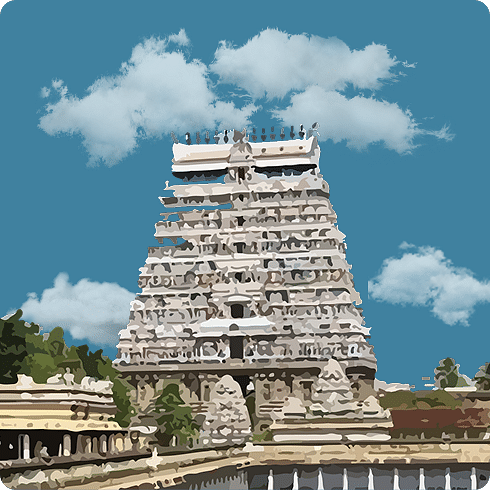
NAVA TIRUPATHI ✨
Set along the Tamirabarani River, the Nava Tirupathi Temples form a divine circuit of nine Vishnu shrines, uniting devotion, legend, and celestial harmony!
Distance from Regency Tirunelveli30 km
Timing6:30 a.m. to 12:00 p.m.
4:00 a.m. to 8:00 p.m.FestivalChristmas: (Dec)
New Year: (Dec-Jan)
Easter: (Apr)
Mylai Madha Festival: (Dec)
All Souls Day: (Nov)Transportation CostFor assistance, please contact the front desk.
Disclaimer: The temple's timings are subject to change as per the operating committee's decisions.
About Nava Tirupathi:
- The Nava Tirupathi Temples are a sacred group of nine ancient temples dedicated to Lord Vishnu, located along the scenic banks of the Tamirabarani River in Tamil Nadu, India.
- These temples are situated between Tiruchendur and Tirunelveli, mostly centred around the town of Alwarthirunagari.
- All nine temples are part of the revered Divya Desams, the 108 Vishnu temples mentioned in the hymns of the Tamil Alwars (Vaishnavite poet-saints).
- Out of the 108 Divya Desams, 105 are located in India, one in Nepal, and two are believed to exist beyond earthly realms, making the Nava Tirupathi a significant part of this divine list.
- Each of the nine temples in the Nava Tirupathi circuit is associated with one of the Navagrahas, the nine planetary deities in Hindu astrology.
- Pilgrims believe that visiting all nine temples brings spiritual merit and helps appease planetary influences, making it an important journey for both religious and astrological reasons.
- The temples are spread across a radius of approximately 70 to 80 kilometres, making them accessible for a single-day pilgrimage using local transport or call taxis.
- The pilgrimage generally follows a circular route, beginning and ending in either Tirunelveli or Alwarthirunagari, with each temple visit flowing smoothly into the next.
- With their divine connections, poetic significance, and astrological alignment, the Nava Tirupathi Temples offer a journey that blends devotion, legend, and cosmic harmony in one unforgettable trail.
NAVA KAILASAM TEMPLES ✨
Set along the scenic Thamirabarani River, the Nava Kailasam Temples honour Lord Shiva and the Navagrahas, offering a sacred path to peace and planetary harmony!
Distance from Grand Chennai10 km
Timing6:30 a.m. to 12:00 p.m.
4:00 p.m. to 8:00 p.m.FestivalNavaratri: (Sep-Oct)
Deepavali: (Oct-Nov)
Pongal: (Jan)
Mahotsavam: (Dec)
Karthigai Masam: (Nov-Dec)Sacred Food OfferedAthirasam and Laddu
Transportation CostFor assistance, please contact the front desk.
Disclaimer: The temple's timings are subject to change as per the operating committee's decisions.
About Nava Kailasam temples:
- The Nava Kailasam temples are a group of nine sacred temples dedicated to Lord Shiva, located along the banks of the Thamirabarani River in the southern districts of Tirunelveli and Thoothukudi in Tamil Nadu.
- These temples are revered as spiritual equivalents of the Navagrahas, the nine planetary deities in Hindu astrology, and are collectively known as the Nava Kailasam or Nava Kayilayam Kshetras.
- Each temple is associated with one of the nine planets, making the pilgrimage significant not only from a religious perspective but also in terms of astrological benefits.
- The temples are situated on either side of the Thamirabarani River, and visiting them involves a scenic and spiritually enriching journey across the riverbanks and the countryside.
- The Nava Kailasam temples are not located in a single cluster, but are spread out across various towns and villages, requiring pilgrims to travel some distance between each shrine.
- The pilgrimage traditionally begins at Papanasam and ends at Sri Kailasanathar Temple in Kallidaikurichi, covering all nine temples in between.
- It is believed that visiting all nine temples can help devotees overcome planetary doshas (astrological afflictions) and lead them towards spiritual liberation.
- Many devotees choose to complete the pilgrimage in a single day using local transport or private vehicles, though it may also be done over two days for a more relaxed experience.
- The Nava Kailasam temples hold deep significance for devotees of Lord Shiva and are often visited alongside the nearby Nava Tirupathi temples, offering a balanced pilgrimage devoted to both Shaivite and Vaishnavite traditions.
Divine Facts:
Long ago, tucked away in the lush folds of the Podhigai Hills, Sage Agasthiyar was deep in penance—so deep, in fact, that even the trees whispered in silence around him. Known by many names like Kumba Muni and Kuda Muni (clearly a sage who didn’t believe in keeping things simple), Agasthiyar was the spiritual powerhouse of ancient Tamil Nadu. Enter Uromasa Maharishi, his star disciple and—just casually—the grandson of Lord Brahma. With such a divine résumé, you'd think he'd already have a fast track to heaven. But no—he wanted the full package: a vision of Lord Shiva and salvation. Proper overachiever, this one. With utmost humility, he approached his guru and said, “Oh revered Guru, with your guidance, I wish to behold Lord Shiva and attain moksha.” Agasthiyar, likely mid-meditation and halfway through cosmic paperwork, opened one eye and calmly replied, “Float nine flowers down the sacred Thamirabarani River. Wherever each flower touches the riverbank, build a Shiva temple. When the last one lands, take a holy dip there. That’s your way in.” No lightning bolts. No booming voice from the sky. Just nine flowers and a lifetime’s worth of temple-building. Uromasa Maharishi didn’t blink. He got to work—probably the only man in history to go flower shopping for salvation. He released nine blossoms into the current of Thamirabarani, each drifting like a petal with purpose. One by one, the flowers reached different banks—Papanasam, Cheranmahadevi, Kodaganallur, and so on—each place now glowing with a Shiva temple, each stop tied to a planet. The river, it seemed, had its own celestial GPS. The ninth and final flower made a dramatic stop at a place so fresh, it didn’t even have a name yet. Uromasa dubbed it “Sernthapoomangalam”—literally, “the place where the last flower rested.” It’s got a poetic ring to it, doesn’t it? Certainly better than “Last Stop: Moksha”. Once the temples stood tall, Uromasa took that final dip in the Sangam Theertham. And in that sacred splash, he was blessed with a divine vision of Lord Shiva. No thunder. No fanfare. Just peace, grace, and moksha—like a spiritual mic drop. And thus, the Nava Kailasam temples were born—not just nine shrines, but nine steps on a floral path to freedom. Today, thousands walk the same trail, hoping their prayers too, might float gently into the divine._6f116686)
_00a65832)
THIRUCHENDUR MURUGAN TEMPLE ✨
Set against the backdrop of the Bay of Bengal, Thiruchendur Murugan Temple is a coastal jewel among the Arupadai Veedu, where divine victory meets timeless devotion!
Distance from Regency Tirunelveli55 km
Timing5:00 a.m. to 8:30 p.m.
FestivalAadi Pooram: (Aug)
Aadi Krithikai: (Aug)
Aadi Thirumanjanam: (Aug)
Ganesh Chathurthi: (Aug-Sep)
Navarathri: (Sep-Oct)
Skanda Shashti: In the Tamil month of Karthikai (Oct-Nov)
Thai month: (Jan)
Vasantha Urchavam: (Jul-Aug)
Thotti Unjal Urchavam: (Jul-Aug)Sacred Food OfferedPulisadam
Transportation CostFor assistance, please contact the front desk.
Disclaimer: The temple's timings are subject to change as per the operating committee's decisions.
About Thiruchendur Murugan Temple:
- Thiruchendur Murugan Temple is one of the six sacred abodes (Arupadai Veedu) of Lord Murugan, located along the coastal town of Tiruchendur in Tamil Nadu.
- The temple is dedicated to Lord Murugan, also known as Kartikeya, the Hindu God of War, who is believed to have defeated the demon Tarakasura.
- The origins of the temple date back several centuries, established to commemorate Lord Murugan's divine victory and to serve as a centre of worship.
- The temple complex spans 299 feet from north to south and 213 feet from east to west, showcasing the brilliance of traditional Tamil temple architecture.
- One of the temple’s most iconic features is its seven-tiered gopuram, which stands at a height of 138 feet and is adorned with intricate carvings and sculptures.
- Inside the complex is the Avast Mandapam, a pillared hall supported by 124 elaborately carved pillars that reflect the artistic and spiritual depth of the temple’s creators.
- Over time, the temple has evolved into a vibrant cultural and religious centre, welcoming devotees from across the country and abroad.
- The annual Kanda Shasti festival is the most significant celebration held at the temple. It is a six-day event commemorating Lord Murugan’s victory over the demon king Surapadman.
- A key highlight of the festival is the Surasamharam, a dramatic re-enactment of the battle between Murugan and Surapadman, performed with devotion and grandeur.
- Throughout the year, the temple also hosts various other religious and cultural events that strengthen communal faith and celebrate Tamil Nadu's rich heritage.
Divine Facts:
Back in an age when oceans whispered secrets and mountains listened in silence, the celestial realms faced quite a predicament. The skies weren't blue with peace—they were clouded with worry. And at the heart of this cosmic chaos was one particularly troublesome asura: Surapadman. Once upon a time, Surapadman had been a model devotee—doing tapasya so intense, even the sun squinted in admiration. Pleased with his devotion, Lord Shiva granted him mighty boons. But alas, much like giving a toddler a crown, it didn’t end well. The moment Surapadman realised how powerful he’d become, he decided he’d had enough of harmony. He locked up Indra, harassed the devas, and strutted about the three worlds like he owned the cosmic postcode. The devas, now more stressed than sages during monsoon with no roof, turned to their divine general—Lord Murugan, the youthful god of war, wisdom, and peacock-chariot parking. Murugan descended upon Thiruchendur, not for a beachside retreat but for a righteous battle. What followed was no ordinary scuffle. The skies rang with the clang of divine weaponry, and the waves of the Bay of Bengal paused mid-tide just to watch the spectacle. Surapadman’s army charged with confidence; unfortunately, they hadn’t read the part where Murugan’s vel doesn’t miss. One by one, the demons fell—until only Surapadman and his son, Iraniyan, remained. Iraniyan, after a quick cost-benefit analysis, decided discretion was the better part of valour and bowed out. Surapadman, however, chose a more dramatic route—he slipped beneath the sea, hoping Murugan wouldn’t follow. But Murugan did, of course. With a single, blinding strike of his vel, he split Surapadman in two. But instead of total destruction, something extraordinary happened. From Surapadman’s remains emerged a peacock and a rooster—symbols of divinity, not defeat. The peacock became Murugan’s vahana (vehicle), the rooster his battle standard. It was less a punishment and more a celestial promotion—proof that even the defeated could find a place in divine service. One might say Surapadman got the most graceful exit in mythological history. And so, the day of this victory came to be known as Skanda Shasti—celebrated with devotion, drama, and the re-enactment of that great battle, where good didn’t just triumph, it did so with a chariot, a spear, and a great deal of grace. But the story doesn’t end there. Moved by the moment and determined to honour his father Shiva, Murugan asked the divine architect Mayan to build a temple right where the battle took place. True to form, Mayan didn’t just build a shrine—he created a masterpiece by the sea, complete with stunning architecture and spiritual energy strong enough to shake the sand.
